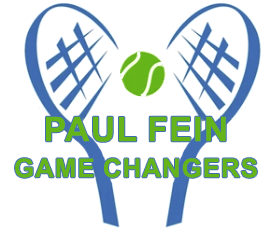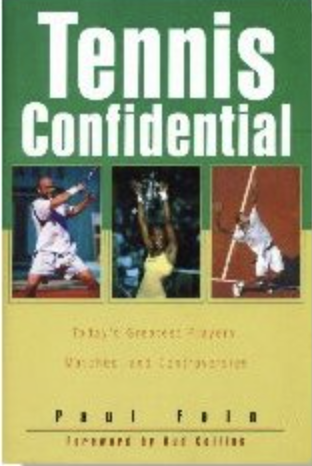Iga Swiatek, Self-Reliance, and the Coaching Rule
Hits: 47
Iga Swiatek provided one of the most thought-provoking quotes during the Wimbledon fortnight. After 32-year-old Alize Cornet, a versatile, clever French veteran ranked No. 37, ended Iga's terrific 37-match winning streak, by upsetting error-plagued Iga 6-4, 6-2, the 21-year-old Pole said, “Usually when I’m coming back, I have some kind of a plan, and I know what to change. Here I didn’t know. I was confused. On grass courts, everything happens so quickly. I didn’t tank it, but I just didn’t know what to do.”

This stunning admission by a reigning world No. 1 underscored the importance of self-reliance in tennis. I believe coaching is rightly prohibited at Grand Slam tournaments. Swiatek’s setback also made a strong case why coaching should be abolished—except at team events—yet the US Open decided to allow it on an experimental basis this year.
In 2009, I wrote an essay titled "10 Reasons Why On-Court Coach Is Bad for Tennis." I have periodically updated parts of it.
For those of you interested in this controversial issue, I'm enclosing the essay below. I welcome your informed views. You can also email me directly at This email address is being protected from spambots. You need JavaScript enabled to view it.
10 REASONS WHY ON-COURT COACHING IS BAD FOR TENNIS
by Paul Fein, Tennis Writer-Tennis Coach
“Tennis is two guys in the arena, trying to figure it out.” – Andre Agassi
“This clash of man against man without any support or any time-out is one of the best things about tennis.” – Boris Becker
Tennis’ enduring appeal comes from its one-on-one challenge where competitors pit their athleticism, skill, fitness, courage, poise, and strategy against each other. On-court coaching—which the WTA Tour legalized in 2008—diminishes this defining and distinguishing feature of our sport. Here are ten reasons why on-court coaching is bad for tennis.
1. Self-Reliance — Unlike many sports, tennis tests athletes without allowing substitutions, lengthy halftime or period breaks, or a game-ending clock to “save” players. The most important pro rule, though, prohibits coaching during matches (except in Davis Cup and Fed Cup team events, and the WTA Tour competition). That self-reliance makes the individual sport of tennis singles a highly respected and entertaining battle between two finely tuned and mentally resilient athletes. On-court coaching clearly diminishes these virtues. As former world No. 4 Jimmy Arias said, “A better coach shouldn’t determine who wins the match. This is an individual sport—mano a mano.”
2. Coaching Advantages — On-court coaching makes a big and unfair difference for several reasons. Coaches correct overall strategy and adjust specific tactics, such as shot selection, positioning, and technique lapses (viz., service-toss height, keeping feet moving, etc.). Their soothing words relax and reassure nervous, despondent, angry, frustrated, and explosive players. Simple advice, such as slowing down between points, switching rackets to looser or tighter strings, or reminding absent-minded players to drink and eat during changeovers, can also improve performance considerably.
3. Unfairness and Conflict — Matches come down to two-versus-one in the case of players who cannot afford a traveling coach, don’t want a coach, or whose coach is unable to attend the tournament. Roger Federer said, “I don’t support on-court coaching, I think that I have the best team in the world, and so I don’t think it’s fair that I could profit from that and another guy, who has maybe no coach can’t benefit at all.” Fairness is the paramount goal in sports, yet two against one—a coached player against a player without a coach—is undeniably unfair. And when opponents share the same coach, imagine the conflict of interest, not to mention the conflict.
4. Improving Play — Leif Shiras, a veteran TV announcer and former world-class pro, asserted he favored on-court coaching because “I’m for anything that will improve the level of play.” Anything? Allowing three minutes, instead of 90 seconds, for changeovers would rest players more and hence improve their play, but that doesn’t justify making this misguided rule change either. This illogical argument becomes even more untenable when one considers that top 100-ranked women pros already perform at a demonstrably higher level and produce more scintillating shots than ever.
5. Educational Value — The WTA Tour contends that fans will get an “inside look” at strategy and technique from listening to what on-court coaches, who are required to wear microphones during televised matches, tell players. But American TV viewers already enjoy (or are annoyed by) a plethora of analyses, opinions, and counterpoints by two, three, or even four competent commentators for every match.
6. Giving Away Secrets — “It gives commentators and producers some more color, another actor in the play, a peek behind the curtain,” WTA Tour CEO Larry Scott told USA Today in 2009. However, tennis coaches, just like baseball coaches and managers talking to struggling pitchers on the mound, will frequently avoid being overheard one way or another. No prudent coach would reveal his advice, because that proprietary information can be used against his player in that match and in future matches.
7. Image Problem — On-court coaching negates the image of the contemporary female athlete as liberated, strong, and independent. Instead, women appear to be in need of help, almost damsels in distress; and, even worse, the help comes most often from male coaches. Fans contrast this neediness with self-reliant men who aren’t allowed on-court coaching on the ATP Tour.
“I find that to be so sexist,” Mary Carillo, the multi-award-winning ESPN, Tennis Channel, and NBC tennis analyst, told Inside Tennis. “Men don’t have it, but the women are allowed to say, ‘Daddy, she’s breaking my serve’? Are you kidding me? This is the biggest women’s sport in the world. We’ve had decades of mental toughness. It was always, ‘Give me the ball, I’m going to figure a way to walk off winning this. I refuse to lose.’ That’s the whole, beautiful point of it. Here’s a sport with a chance to show young girls what a strong and independent woman can do, yet you get this—basically saying, ‘I can’t figure this out by myself, I’m just a woman.’ That galls me.”
8. Animosity Anyone? — Nigel Sears, formerly Anne Keothavong’s coach and Great Britain’s Fed Cup captain, predicted that on-court coaching will cause bad feelings among players and coaches. “When they’re under stress and start being irrational or whatever, you’ve got an inflammable situation,” Sears told the Memphis Commercial Appeal. “When players get their games dissected by coaches in front of everybody, they’re not going to like it. It’ll become more and more cutthroat: ‘So-and-so’s coach said my forehand was crap, so-and-so said I was a choke, so-and-so said I had no talent at all.’ You’ll get to that stage.” Ironically, coaches may resent on-court coaching, too. “Yes, it sorts out the monkeys from the good coaches,” says Sears. “And there are plenty of monkeys out here.” Coaches who grandstand or argue with umpires will create more problems.
9. Language Barrier — Coaches on the polyglot women’s circuit are permitted to talk in whatever language they’re most comfortable. Keep in mind that only four of the top 30 and just 20 of the top 100 female singles players come from countries where English is the primary language. Older coaches and parents, as surrogate coaches, are even less multilingual. Does trying to understand foreign languages or fractured English with heavy accents sound enticing to you? Finally, translators only increase the verbal clutter on TV.
10. Just A Gimmick — On-court coaching—which the ATP Tour rejected after a failed 1998 experiment—is a shameless gimmick obviously intended to boost TV ratings. “The powers that be at the networks don’t trust that the sport is compelling enough,” averred Carillo. “They’ll do anything to trick it up because they don’t understand its beauty, its subtleties, its very nature. And please, no gimmickry. On-court coaching is like taking an examination and your teacher giving you all the answers.”
Wimbledon chief executive Richard Lewis told ESPN in November 2017 why Wimbledon would block any move to legalize in-match coaching at the majors. “Allowing coaching is a fundamental change to the sport and would be a really big decision for tennis,” said Lewis. “I’m not aware of any evidence of the WTA allowing it making any difference to the attractiveness of their Tour. We are philosophically very against it. We believe it is a gladiatorial sport, an individual sport; you go on court and the whole premise of tennis is that you are on your own. That is one of the beauties of tennis compared to most, if not every other sport. For those that say it’s difficult to police coaching at the moment and this would solve it—we say it doesn’t solve anything at all; it creates different issues. We will be pretty challenging and dogmatic on our views on coaching.”
Lewis makes a powerful and conclusive case why on-court coaching is bad for tennis. Let’s hope the WTA Tour comes to its senses and abolishes on-court coaching.



